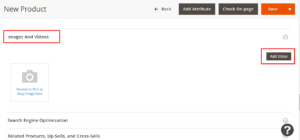How to Upload Single Products to Magento
Magento offers a wide range of functional tools and capabilities to its consumers. This includes tools for catalog management, marketing, and search engine optimization. Magento provides both a free Magento open source and a feature-rich Magento Commerce platform, so the platform can grow and adapt to your business, whether you serve just a few or a million consumers.
Why choose Magento for your e-commerce business?
Magento has a compelling feature set that can help your business succeed in the e-commerce market. Here’s a look at why Magento can be the ideal platform for your online store:
Scalability
Magento can be tailored to your specific business requirements. It can easily scale to suit your success as your product line and consumer base increase.
Customization
Magento has many customization options, allowing you to personalize the look and feel of your online store to exactly fit your brand identity and provide your consumers with a one-of-a-kind shopping experience.
Powerful marketing tools
Built-in marketing tools allow you to launch targeted marketing campaigns, send email newsletters, and run discounts to attract new consumers and increase revenue.
SEO friendly
Magento’s features are intended to be search engine friendly, which can increase your store’s exposure in internet searches and drive organic traffic.
Security and reliability
Robust security features secure your shop and consumer data. Magento also prioritizes uptime, which reduces the likelihood of downtime that could impact your sales.
Open-source option (Magento open source)
If you have any technical knowledge, the open-source version of Magento offers a low-cost approach to setting up an online store with significant customization options.
Large app marketplace
A vast app marketplace offers a wide range of third-party apps that integrate effortlessly with your Magento store. These apps can add functionalities like accounting tools, advanced shipping options, or loyalty programs to enhance your online store’s capabilities further.
What are the essential settings before uploading single products to Magento?
- Store Location and Currency: Specify your store’s location and default currency. This guarantees that your consumers receive proper price and tax calculations.
- Payment Methods: Enable the payment gateways you intend to provide for customer purchases. This might include payment cards, PayPal, or cash on delivery.
- Product Attributes: Determine the product qualities you will use to categorize and describe your items. Size, material, color, and brand are all possible options.
- Product Categories: Create well-defined product categories to help you arrange your products. This way, customers can quickly explore and locate products.
To add a single product to your Magento store, follow these steps:
- Log in to your Magento admin panel.
- From the dashboard, click on “Products” in the left-hand menu.
- Click on the “Add Product” button.
- Select the product type (simple, configurable, etc.) and click on the “Continue” button.
- Enter the product’s name, SKU, and any other relevant details in the General tab.
- In the Images and Videos tab, click on the “Browse” button to select an image for the product. You can also add additional images by clicking on the “Add New Image” button.
- Set the price and inventory for the product in the Prices tab.
- In the Categories tab, select the categories that you want the product to be a part of.
- Click on the “Save” button to add the product to your store.
What are common errors encountered during single product uploads, and how can you fix them?
1. Missing Required Information
- Error Message: You will most likely see a notification about a missing necessary field.
- Fix: Double-check your product information for any missing details. Product names, prices, SKUs, and product categories are all common culprits.
2. Incorrect Data Format
- Error Message: The error message might point to a formatting issue with your data.
- Fix: Ensure all data points are entered in the correct format. For instance, prices should be numbers, while descriptions can include text.
3. Image Upload Issues
- Error Message: The error message might specify a problem with the image file or its upload process.
- Fix: Verify that the image file size adheres to Magento’s limits (typically under 20MB) and is in a supported format (like JPG or PNG). Also, double-check the image file path for any typos.
4. Attribute Discrepancies
- Error Message: The error message might highlight an issue with product attributes.
- Fix: Ensure you’ve assigned the correct attribute set (collection of relevant attributes) to your product based on its category. For example, a clothing product wouldn’t use the same attribute set as an electronic device.
5. Problem with Product URLs
- Error Message: The error message might indicate an issue with your product URL.
- Fix: Maintain unique and descriptive product URLs. Avoid special characters or spaces, and keep them relevant to the product name.
6. Proactive Prevention
- Proofread and Double-Check: Before hitting upload, take the time to thoroughly review your product information for any inconsistencies or missing details.
- Utilize Magento’s Preview Function: Many Magento versions offer a preview function that allows you to see how your product will appear on the storefront before publishing it live. This can help catch any formatting or display issues before they go public.
Can I automate any part of the single product upload process in Magento?
Partial automation with integrations
Magento offers extensions and integrations with services like Google Sheets or ERP (Enterprise Resource Planning) systems. These integrations allow you to manage product information in a familiar spreadsheet format and then import that data into Magento for product creation. While this doesn’t fully automate individual uploads, it can streamline data entry and reduce the need for manual product creation within the Magento interface.
Limited automation with third-party tools
A handful of third-party tools claim to offer some level of automation for product uploads in Magento. However, these tools often come with additional costs, require some technical knowledge to set up, and might not integrate seamlessly with your specific Magento version. It’s important to carefully research any third-party tool before implementing it.
Alternative solutions for automating product upload in Magento
While automation can handle certain aspects of product uploads and management, you can completely automate your product store management by hiring our Virtual Assistants.
We offer various virtual assistant services to streamline your Magento store operations, including:
- Product Data Entry and Management: Our Virtual Assistants can assist with manually uploading your product information, ensuring accuracy and completeness.
- Image Editing and Optimization: We can edit your product images to meet Magento’s specifications and optimize them for better search engine visibility.
- Inventory Management Support: Our VAs can help you track inventory levels, manage stockouts, and update product information as needed.
- Customer Service: We can provide excellent customer service by responding to inquiries, addressing concerns, and ensuring a positive customer experience in your Magento store.
Business owners looking to develop a future-proof professional E-commerce website should consider Magento’s online platform. It is one of the best open-source websites to build an online store in no time! eComVa Wiki will guide you with everything you need to know.
Virtual Assistant Service
Get in touch












